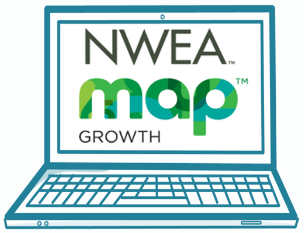The Move to MAP Testing

April 17, 2023
Earlier this school year, students took the MAP test for the first time since they were in middle school. The MAP test, or Measures of Academic Progress test, is a standardized assessment that is administered up to three times a year with the intention of helping teachers to know where students are in their mathematics and language arts learning.
While this test was new to Deerfield High School, it was not new to most of its students. District 109 and District 112 have been administering MAP tests for several decades at the elementary schools as well as the middle schools. District 113, on the other hand, had always opted for STAR testing, a significantly shorter standardized testing alternative. This year marked a change, though, as students were told they would be taking three MAP tests for both math and language arts—instead of one for STAR.
Michael Lach, the Assistant Superintendent for Curriculum, Instruction, and Assessment, explained that MAP testing provides crucial data that is used to assess the math and English curriculum in District 113. Data from the MAP test is preferable, he explained, because feeder schools such as Caruso and Shepard use that same test. The district thought it was important that its schools use the same test as feeder schools because it allows results to be portable between schools. Dr. Lach explained that although the STAR and MAP tests “are very similar in purpose, it is difficult to compare scores from one another. For example, the 50th percentile on MAP measures very differently than the 50th percentile on STAR.” Highland Park High School will also be switching to MAP testing for the upcoming school year.
Another problem with the STAR test was that the questions are not updated every year, so by the time students are seniors, they have memorized a large portion of the questions on the exam. This provides far less reliable data as to how students are growing academically and how effective the curriculum is.
The switch to MAP testing met unforeseen reactions from students at DHS. Lach recalled receiving some emails from students and teachers who wanted to know why the MAP test was being administered.
Teachers saw first-hand how students felt about it. English teacher Mr. Wolf was shocked to see the “emotional baggage” that accompanied students when taking the test, noting that when he administered the test, students “immediately panicked. People were going out in the hall to text parents. To me, it felt so benign because there could not be lower stakes.”
Although MAP scores have no impact on students’ grades, many students found the test stressful. Students may have anxiety associated with the MAP test because it was critical in middle school in terms of class placement. “Kids are traumatized by the effect MAP had on placement in middle school. It defined students and their view of themselves,” Mr. Wolf says. Although it is not used for that purpose at the high school level, there is still an overbearing amount of stress associated with it. “It wasn’t until we administered it that we realized there is real trauma here,” Mr. Wolf stated. This was never a problem with the STAR test because no one went into it loaded with negative feelings.
It was not just students who were frustrated by the test, teachers were too, says Mr. Wolf. While the STAR test could be completed in half a class period, the MAP test can take up to two full periods. Mr. Wolf reflected the feelings of many teachers, saying, “It’s not fair that we [teachers] should have to bear the burden of administering MAP three times a year if it is going to exceed a class period. By the end of the year, teachers will have used a week to give the test, which is a problem.” Due to these concerns, the test was moved to be taken during an extended homeroom for sophomores and advisory for freshmen.
While MAP testing elicits some negative emotions, it is likely that standardized tests are are not going away. As Dr. Lach said, “We know Deerfield is a great school. We won a Blue Ribbon, but we want to keep getting better. To do that, we need to track how students are doing. We need this information to make sure our students are ready for college and don’t slip through the cracks. I know all teachers here feel the same way.”

